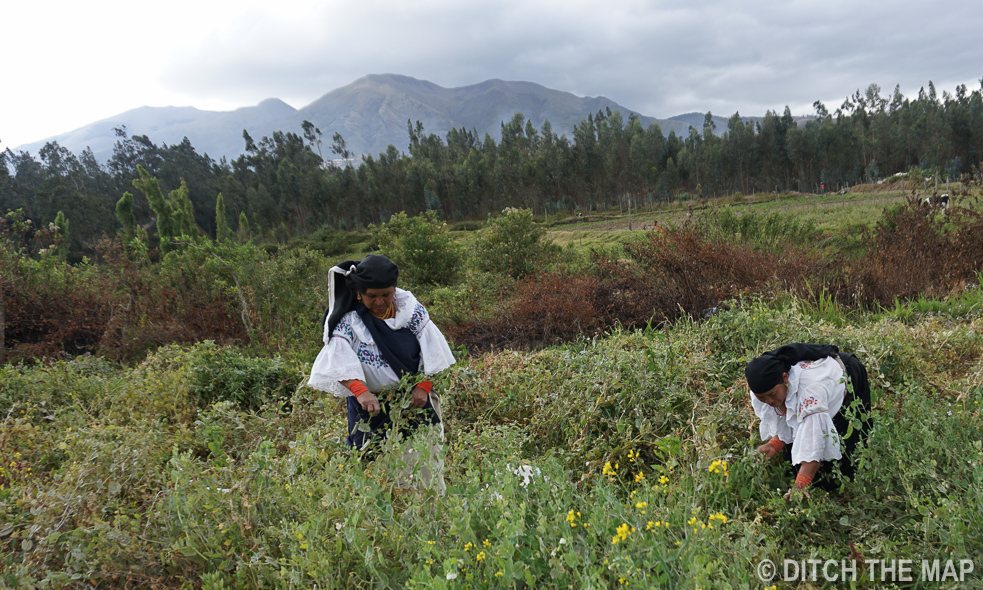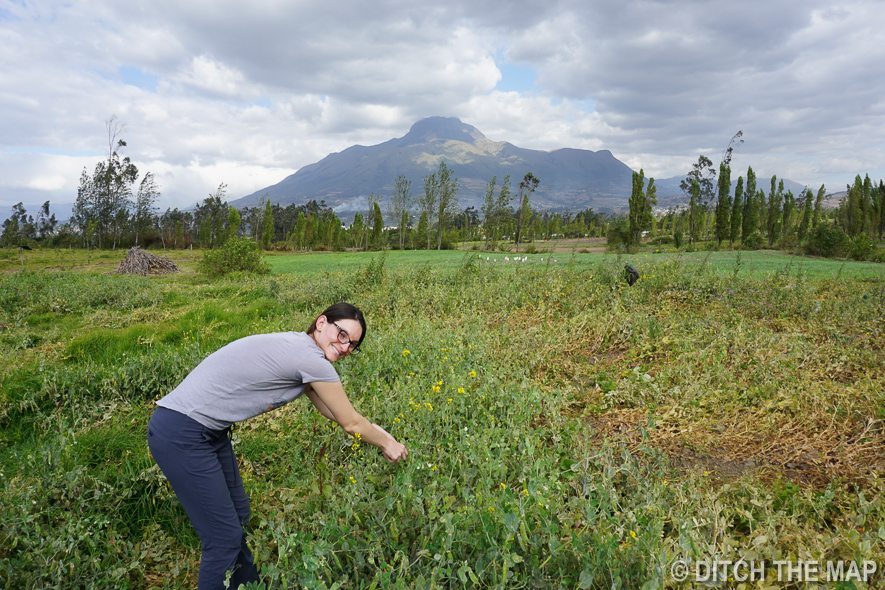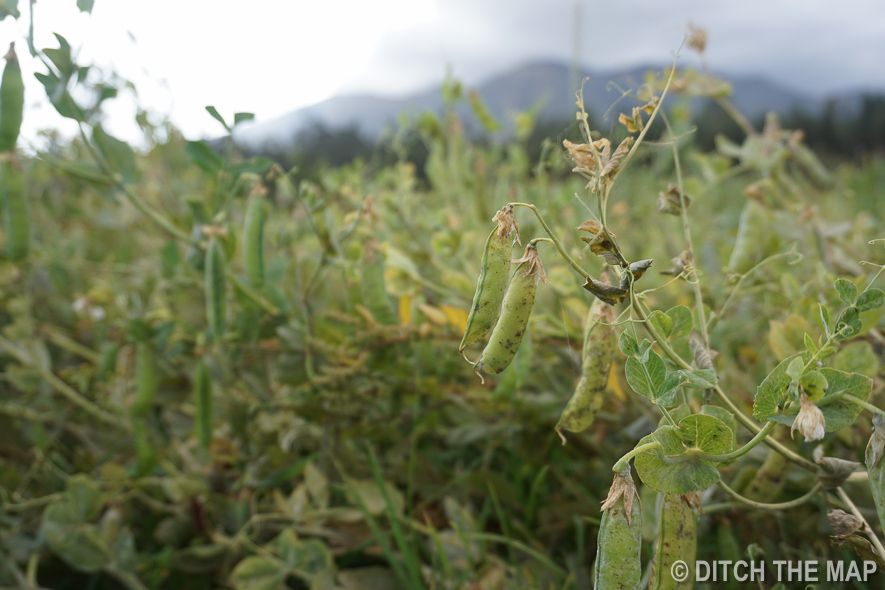Otavalo, Ecuador
/September 3-4, 2015
During our drive to Otavalo we made a pit stop to view Cotopaxi Volcano. We could clearly see the ash plume coming from the center of it. It was quite a site.
Ash plume coming from Cotopaxi Volcano, Ecuador
Otavalo Market
The bus ride from Cotopaxi was less than 3 hours. We dropped our bags off at a tour agency so that we could walk around the town for an hour and a half before meeting back for a shuttle to our homestay in Santa Barbara Community. Walking around Otavalo we quickly notices how people were much more indigenous than anywhere else we've been (not counted the Indians we met during our hike in the Lost City). The adults wore traditional clothing while the majority of the children were in school uniforms. Scott noticed how short many of the men were. In fact, many of the men would need to shop at children's stores in the states. 5 foot 2 inches seemed to be average height.
We tried some street food and walked to an outdoor food market near the city center. The city didn't have much going on besides the large market, which is famous all over Latin America. The Otavalo Market is best known for its handmade Alpaca goods. However, Scott feels that much of the products are not handmade and are likely mass produced. Scott bought an alpaca hat for $3, not too bag after their initial offer of $8. Scott enjoyed showing Sylvie the ropes on how to best negotiate. However, Sylvie wasn't a huge fan and felt the art of negotiation was a tad too confrontational...she's truly the yin to my yang. Sylvie tried on an alpaca sweater that I thought was adorable, however it's not quite durable enough for travel use and shipping internationally is cost prohibitive. Sylvie bought a dreamcatcher.
Scott buys an alpaca hat in Otavalo, Ecuador
Sylvie tries on an alpaca sweater in Otavalo, Ecuador
INTERESTING FACT: Alpacas are smaller than llamas and were bread for their fur, whereas llamas were bread to be pack animals. The alpaca goods were much softer than traditional wool and we toyed with the idea buying a blanket and sending it home...we may revisit this idea once we're in Bolivia though.
We tried this interesting marshmallow-like dessert from a lady on the street. We still don't really know what it was but it tasted like a strawberry marshmallow-fluff mousse.
Trying a Strawberry Marshmallow-Fluff like Dessert in Otavalo, Ecuador
Otavalo Market in Ecuador
After a few hours we had had enough of the market. It's a great place for a day trip but I wouldn't plan to spend any more than 4 hours in the city. There are a few supermarkets nearby with very good prices in case you need to stock up on food. We made sure we had some snacks for our homestay.
Homestay
We met our host family at their home in the Communidad de Santa Barbara. They were very warm and friendly upon greeting us. Fortunately we had our tour guide with us at our homestay for translation (it was only us two + Carmen). The family spoke their native language of Quichua and Spanish, their second language. Spanish is taught in school but Quichua is the language used in the home.
We dropped off our bags in our beautiful accommodations and were taken immediately to a field about 15 minutes away (by walking). It was one of sons that had taken us there. We were apparently going to help the family pick peas/beans for a while. The family owned a plot of farm land within a much larger community field. The family also had land for their cows to graze. We felt a little uncomfortable with how much nicer our accommodations were compared to the rest of the house. The family clearly built our room solely for the purpose of visitors. This homestay program is apparently very important to them financially. I think I remember the mother saying that they've been doing this for 7 years. The father had built the room himself.
Our Beautiful Accommodations at our Homestay in the Santa Barbara Community, Ecuador
The women showed us how to pick the peas/beans and after a little bit the husband come by with some uncarbonated warm fermented corn drink called cicha. It wasn't too strong, in taste or in alcohol content. We continued picking peas/beans until both bag were full. The scenery was absolutely stunning. The sun was strong, but the temperature was moderate thanks to the altitude. The women laughed at me (Scott) because I kept eating the peas/beans in their entirety--they never do this and only eat them after being shucked and then cooked. It was unusual to hear the women speak in their native Indian language since we've become so used to hearing only Spanish.
I helped carry one of the bags back to the house. The women were going to take a bit more time to gather their cows and bring them back to their house for the evening. They had said that if they kept them in the pasture that someone would likely come and steal them.
Back at the house Sylvie and I played with some of the dogs. There was a new litter of puppies that must not have been more than a month old. They were so damn cute. Sadly the next morning on our way to milk the cows we found one of the puppies had died over the night. The Indian mother took a hold of the dead puppy's paw and tossed it aside in a rather nonchalant manner.
After we chucking peas for a while the mother of the house invited Sylvie and I inside to watch while she made cheese, or queso. They simply poured some type of culture (I think rennet) into a gallon or two of fresh milk. She stirred for a few minutes and then let the milk sit for 3 minutes. Within this short period of time the milk had turned into a solid. She strained off the excess liquid and saved the cheese for dinner. It was bland, boring, and simple. I would be happy to never eat it again. I miss sophisticated and refined cuisine. Sylvie and Carmen did not try the cheese. The woman explained to us that they used the excess liquid to feed the dogs.
Scott Chucks Peas for a Long While During our Homestay in Ecuador
Making Queso from Fresh Milk During our Homestay in Santa Barbara, Ecuador
In addition to all the dogs there were dozens and dozens of chickens, roosters, and chicks roaming the property freely. There was also at least 1 cat. The kitchen door had trouble staying closed and often times the outdoor animals (cat/dogs) would come in and out as they pleased. Clearly sanitation was not top on the family's list. The family also had a few rabbits and a couple dozen guinea pig--guinea pigs are eaten on very special days as an ancient custom. I (Scott) am going to try to find some guinea pig on a menu while in South America.
Chickens Roam Freely on the Property at our Homestay in Ecuador
The Mother Feeds the Guinea Pigs at our Homestay in Ecuador
We were awake before 5, thanks to the roosters right outside our window...literally. I learned something the morning of the homestay--I learned that roosters continue to crow for quite a few hours after they initially start at 4-something in the morning. We met the host mother at 7:30 to milk the cows--I (Scott) had asked the previously night if we could. Sylvie tried milking but was quickly turned off by the fleshy texture of the cow's nips. I (Scott) thought I did a very good job. We got a kick out it when the mother cow took a huge dump right on her calf's back.
Learning How to Milk a Cow at the Homestay in Ecuador
I (Scott) asked to taste the milk that we freshly milked but Carmen and Sylvie had no interest. I was a little disappointed to discover that the host mother had boiled the milk before serving it to me. I would have loved to try unpasteurized milk, despite the health risks.
Scott Enjoys Milking the Cow at the Homestay in Ecuador
Sylvie Does Not Enjoy Milking the Cow at the Homestay in Ecuador
Our dinner consisted of the peas we picked/shucked, the queso we made, sliced avocado, rice, and corn soup. It was bland but palatable. The next morning we had instant coffee, some rolls with homemade jam. I (Scott) was a bit disappointed to hear that all other members in our tour enjoyed chicken for dinner and eggs for breakfast. During dinner we tried very hard not to stare at one of the children (she was in her 20s) breast feeding her child. What disturbed me (Scott) not the breastfeeding, but the fact that the child looked too old to still be breastfeeding. The father did not join us during dinner as he went to go pray. There was, however, 11 people total sitting around the table for dinner.
We both feel that this homestay experience has been the highlight of our trip thus far!
We do not feel right ending this post without mentioning Grandma Death--the host mothers mother joined us for supper. She never spoke or made any type of facial gesture the entire time. She simply existed. We're sure that she must have had a very tough life. I (Scott) jokingly suggested that if Sylvie was not diligent in her sunblock application that after a year or two of travel she may look just like Grandma Death.
The Host Mother's Mother Joined us for Dinner in Ecuador
Sylvie and I pick peas in the beautiful landscape of Ecuador (click picture to watch video)

















